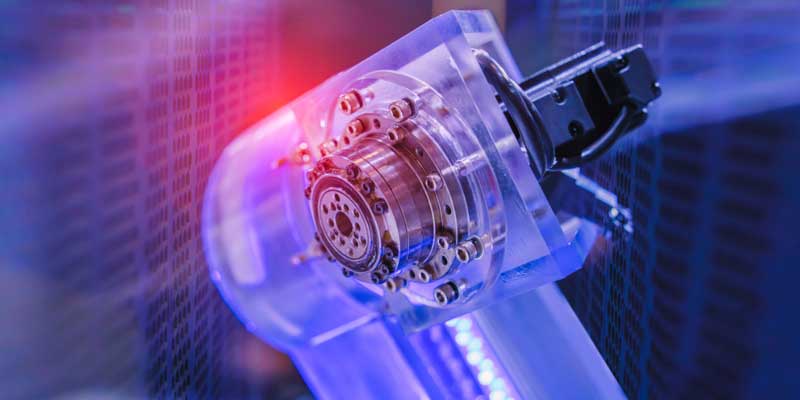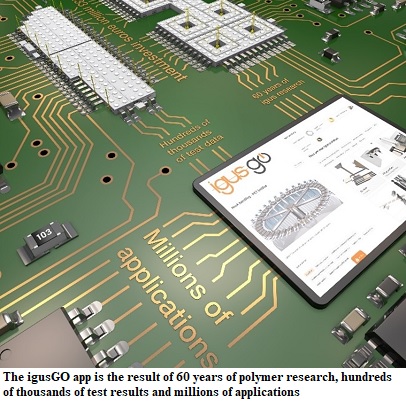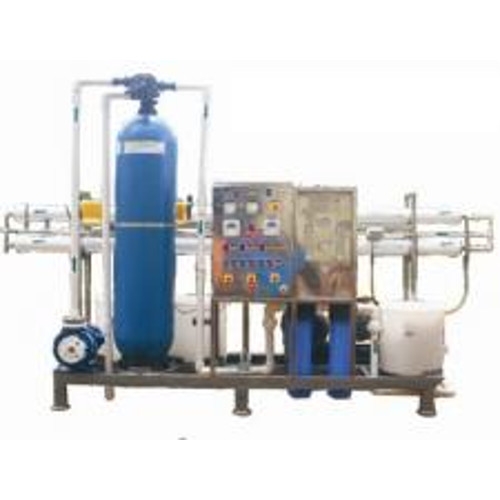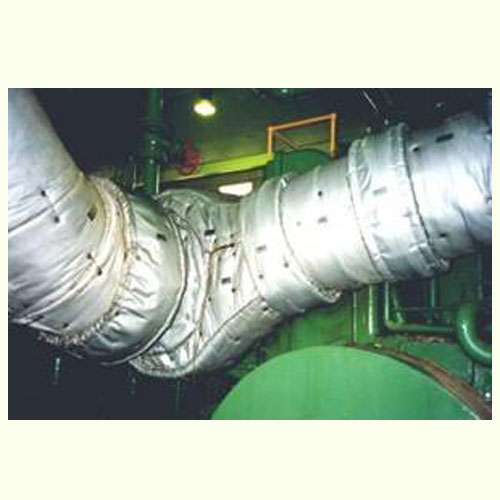Schedule a Call Back
Demand for collaborative applications is expected to rise in India
 Interviews
Interviews- Nov 25,22

The Denmark-based OnRobot, the world’s leading provider of hardware and software solutions for collaborative robotic applications, aims to bring the benefits of collaborative automation to manufacturers of all sizes. Recently, the company launched D:PLOY – the industry's first automated platform for deployment of collaborative applications - in India to simplify automation for manufacturers in almost every industry. In this interaction with Rakesh Rao, James Taylor, General Manager, APAC, OnRobot, explains why collaborative applications are gaining traction and how manufacturers can reap the benefits of automation.
How is OnRobot serving the manufacturing industry? How is OnRobot equipping Indian industries in their path towards modernisation?
We are a global leader within the collaborative applications space. Our goal is to break down traditional barriers to automation adoption, bringing the benefits of collaborative automation to manufacturers of all sizes. There is a critical need in India to boost the manufacturing sector’s long-term competitiveness and sustainability especially as the country works towards building itself as a global manufacturing hub.
We are well positioned to support Indian manufacturers to modernise their processes with the industry’s broadest range of Plug & Produce grippers, F/T sensors, vision, processing tools and application solutions. Most recently, we launched D:PLOY - the industry's first automated platform for deployment of collaborative applications. This is the biggest innovation since collaborative robots (cobot), which will revolutionise and further simplify automation for Indian manufacturers in almost every industry. It offers dramatic savings of up to 90 per cent on deployment and redeployment time and will work with any leading collaborative or light industrial robot.
What are the advantages of cobots over conventional robots? Which industries are driving the demand for cobots?
Cobots offer many advantages over conventional robots. Most importantly, they work hand-in-hand with smart tools and software to allow collaborative applications to take place – something traditional robots lack.
Collaborative applications – created when lightweight industrial robots and cobots are equipped with intelligent tools such as grippers, sensors, vision and the software that drives them – fulfil today’s modern automation needs. These advanced technologies enable simple, rapid deployment and new processes while working safely alongside workers.
In the past, automation was viable only for large manufacturers who had the space, cash, and technical resources for large investments in traditional industrial robots. Companies needed large runs of the same products and processes over long periods of time. Investments took years to pay for themselves.
Collaborative applications, however, provide a quick and easy entry-point to automation, particularly for smaller manufacturers whose businesses have lower-volume, high-mix production lines. With this technology, SMEs can emerge more competitive with greater production flexibility, higher output, and better quality.
With collaborative automation offering scalability, versatility, and being more affordable than ever, dedicated investment in robotic tooling to enable collaborative applications is prudent to modernise SMEs, support the workforce, and ultimately create more jobs.
The demand for collaborative applications is expected to increase in India as the Indian Government aims to drive the manufacturing sector to contribute a quarter of the country’s GDP by 2025, up from 16 per cent today. This rising demand is expected to be driven by automotive, electronics and metals/machinery industries.
Adoption of robotics in India is very low (with high cost being a major hurdle). Can cobots help India gain a competitive edge in the global marketplace?
Yes, certainly. Traditionally, automation was considered suitable only for large production facilities due to cost and scale. Today, modern automation solutions, like collaborative applications, offer more flexibility and affordability, making it viable for manufacturers of all sizes, including SMEs that lack the resources to make large scale investments.
Small & medium enterprises (SMEs) contribute majorly to India's manufacturing sector. How important will be the role of automation solutions like cobots to raise SMEs productivity? India has 7.9 million SMEs or Micro, Small and Medium Enterprises (MSMEs) which account for 33 percent of India’s GDP and generate over 120 million jobs. MSMEs also represent more than 45 percent of the country’s total industrial production and 40 per cent of total exports. Greater adoption of automation and collaborative applications can help SMEs accelerate the country’s manufacturing output.
I believe collaborative automation will play a key role among SMEs as India expands its “Make in India” initiatives, ultimately becoming a necessity for the country to stay competitive and attractive to international investors—and for its manufacturing sector to reach its $ 1 trillion potential by 2025.
What is the significance of the launch of D:PLOY in India?
While robot deployments have become easier over the past few years, quite a bit of set up and programming is still required to get them up and running. This is where Indian manufacturers, particularly SMEs, require support for complexities that could incur additional costs, delaying the ROI on their automation investment.
D:PLOY is set to benefit manufacturers, system integrators, distributors and robot manufacturers in India. As deployment and redeployment becomes drastically faster, easier and less complex, manufacturers of all sizes can increase productivity and solve their labour shortage challenges. System integrators can deliver more projects in less time with existing resources for higher profits while distributors can tap into new customer segments. Robot manufacturers can expect higher sales from greater automation adoption. D:PLOY is an automation and market enabler for the entire industry.
The launch is timely as demand for industrial automation soars in India and is expected to reach $ 23.09 billion by 2027, increasing at an annual growth rate (CAGR) of 14.26 per cent from 2020 to 2027. This demand is also driven by the governments push towards modernising the manufacturing sector with the goal to increase the industry’s contribution to 25 percent of GDP by 2025.
How is your company helping its customers in making their factories/products "smart" and "intelligent"?
One company that has benefitted from introducing a collaborative application into production is Bajaj Auto, India’s second-largest motorcycle manufacturer and the world’s largest three-wheeler producer. To handle assembly of a new high-precision engine, Bajaj Auto attaches an OnRobot HEX F/T sensor to a cobot, resulting in more consistent, cost-effective production and quality.
Another company that has reaped gains is Sanmatsu, a Japanese contract manufacturer. The company paired OnRobot’s RG6 Dual grippers with a cobot to automate a machine tending application. The RG6 extracts and sets parts simultaneously with its dual grippers, speeding up cycle time and lowering machine idle time roughly by half. This eliminates the need to have a worker continuously stationed at the machine, reducing overtime and lowering production costs by 10 percent.
What are the emerging trends in the industrial automation and robotics space?
We are seeing several emerging trends in the industrial automation and robotics space including:
Collaborative automation: Collaborative automation systems that enable humans, robots, and end-of-arm tools to share the same workspace safely (following a standard risk assessment), without the need for extensive safety fencing or guarding. In the Collaborative Era, the old-fashioned humans-vs-robots dynamic is completely switched around, enabling humans and automation to work together.
Interoperability: With so much adoption and innovation in robotics, manufacturers are looking for versatility and customisation in robotics and automation. They require a new one-system solution, which speeds deployment, so they save time and money and can quickly realise the benefits of automation. With a single platform for building applications and training and single vendor relationship, manufacturers can have access to a full range of tools, full robot compatibility, and virtually unlimited possibilities for collaborative applications.
Real time applications: Manufacturers are also looking for the capability to monitor the performance of multiple collaborative applications simultaneously and in real-time and transform the acquired data into easy-to-understand, visualised device and application-level intelligence. Our automated platform for deployment of collaborative applications – D:PLOY - saves up to 90 per cent on deployment and redeployment time and offers insights into performance indicators and other relevant metrics specific to each application which can be accessed in real-time.
Artificial Intelligence, 5G, IoT: The maturation of these 3 technologies, among others, allows the development of more intelligent robots that perform more precise tasks. Improved cognition capability, real-time decision-making, and smarter motor-actions have positioned robotics for higher-precision and mission-critical use cases – especially in manufacturing.
What are your growth plans (globally as well as for India)?
We are looking at releasing new applications for our newly launched D:PLOY. We will target key applications such as palletizing, CNC (Computerised Numerical Control) machine tending, packaging and material handling, which are typically used in industries such as automotive, electronics, metal and machinery, food & beverage and life sciences. Future releases will address additional machine tending and material handling applications as well as process and assembly applications.
We will also continue to expand our suite of End of Arm Tooling devices and grippers and vision and assembly tools while adding new advanced features to them.
Related Stories

Increasing automation drives servo motors demand
The market for servo motors was significantly influenced by the growing use of automation across a number of industries, including manufacturing, automotive, electronics, and packaging, says Adroit ..
Read more
Igus to invest in 247 new motion plastics products in 2024
The German firm, which recorded Euro 1.136 billion turnover in 2023, increased its customer base by 6.7 per cent.
Read more
“India is aiming for $ 300 bn in engineering goods exports by 2030”
In this interview with Rakesh Rao, Arun Kumar Garodia, Chairman, EEPC India, analyses the performance of India’s engineering goods exports and factors driving the global demand for Indian engineer..
Read moreRelated Products

Industrial Desalination System
Shakunth Aqua Products offers a wide range of industrial desalination system. Read more

Industrial Castors & Wheels
H M Gulamali offers a wide range of castors and wheels manufactured by Blickle, Germany. Read more
Foxconn, Nvidia join forces for AI factories revolutionising tech production
Taiwanese technology giant Foxconn and leading US hardware company Nvidia revealed their partnership to establish "AI factories," advanced data processing centres geared toward driving the production Read more













